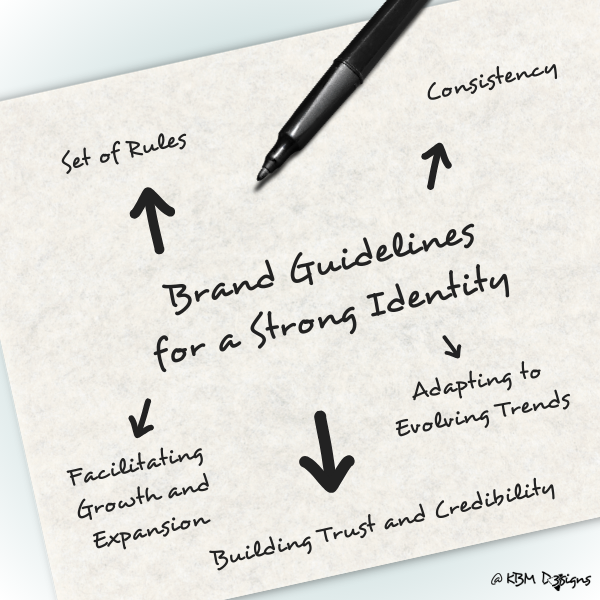What is a target market?, target customer, and target audience-understanding the nuances in between is paramount for small businesses looking to carve out a niche in a competitive landscape. While these terms are closely related, they delineate distinct segments that are critical to developing effective marketing strategies and cultivating brand loyalty.
Let’s take a closer look at each concept, exploring their differences and implications for small business branding.
1. What Is A Target Market?

The target market encapsulates a broader segment of potential customers with shared characteristics and needs that align with a business’s offerings. It involves demographic, geographic, psychographic, and behavioral factors that define the ideal consumer base for a product or service. For instance, a company selling luxury skincare products might target affluent individuals aged 30-50 residing in urban areas who prioritize self-care and prestige.
Article Content:
- What Is A Target Market?
- What is a Target Customer?
- What is a Target Audience?
- Differences and Importance to Small Business Branding
- What Is First – Define Or Identify Your Target Market?
- How To Define Target Market? – Step By Step Guide
- How To Identify Target Market, Offline?
- What Are The Benefits Of Targeting A Specific Market
- One Small Business And Multiple Target Markets
- FAQ’s About What Is A Target Market?
2. What is a Target Customer?

Target customers represent a subset within the target market, comprising individuals or entities most likely to purchase a business’s offerings. Unlike the target market, which encompasses a larger group, target customers are more specific and often categorized based on buying patterns, preferences, and purchasing power. For example, within the target market of luxury skincare, a target customer could be a high-income professional seeking high-end skincare solutions to maintain youthful skin.
3. What is a Target Audience?

The target audience encompasses individuals or groups intended to be reached through marketing efforts. It includes both current and potential customers, as well as other stakeholders such as influencers, industry experts, and media outlets. Unlike the target market and target customers, the target audience extends beyond direct consumers and encompasses anyone who might engage with the brand’s messaging. In the context of luxury skincare, the target audience could involve beauty bloggers, magazine editors, and social media influencers with a significant following in the beauty and lifestyle niche.
4. Differences and Importance to Small Business Branding
4-1. Segmentation Precision:
Understanding the distinctions between target market, target customers, and target audience enables small businesses to tailor their marketing strategies with precision. By identifying specific segments within the broader market, businesses can craft personalized messaging and offerings that resonate with their intended audience, thus maximizing engagement and conversion rates.
4-2. Resource Optimization:
Focusing efforts on the most lucrative segments minimizes wastage of resources such as time, money, and manpower. Small businesses can allocate their marketing budget more effectively by targeting customers who are most likely to convert, thereby enhancing ROI and scalability.
4-3. Brand Differentiation:
In a saturated market, delineating target market segments helps small businesses differentiate their brand and offerings from competitors. By understanding the unique needs and preferences of their target customers, businesses can develop distinct value propositions and brand identities that resonate with their audience, fostering long-term loyalty and advocacy.
4-4. Adaptability and Growth:
As consumer preferences and market dynamics evolve, small businesses must continuously refine their target market, target customers, and target audience to stay relevant and competitive. Regularly reassessing these segments enables businesses to adapt their strategies in response to changing trends and consumer behavior, fostering sustainable growth and resilience.
In essence, comprehending the nuances between target market, target customers, and target audience is indispensable for small businesses striving to establish a strong brand presence and drive sustainable growth. By identifying and engaging with the right audience segments, businesses can cultivate meaningful connections, foster brand loyalty, and ultimately thrive in a dynamic marketplace.
5. What Is First – Define Or Identify Your Target Market?
Typically, the process begins with defining a target market and then identifying it. Here’s a breakdown of the process:
- Define the Target Market: This involves determining the specific characteristics of the ideal customers that the business wants to reach. These characteristics may include demographics (age, gender, income level), psychographics (lifestyle, values, interests), geographic location, and purchasing behavior.
- Identify the Target Market: Once the target market is defined, the business then identifies where these potential customers can be found. This step involves conducting market research, analyzing data, and gathering insights to pinpoint the locations, platforms, and channels where the target market is most active and receptive to the business’s offerings.
By first defining the target market, the business gains clarity on who they are trying to reach and what their needs and preferences are. This enables them to then identify specific strategies and tactics to effectively engage and connect with their target audience.
6. How To Define Target Market?
Defining a target market involves identifying the specific group of consumers who are most likely to be interested in and purchase your products or services. Here’s a step-by-step guide on how to define your target market:
First, Understand Your Product or Service:
Start by thoroughly understanding what you’re offering. What problem does your product or service solve? What are its key features and benefits? Having a clear understanding of your offering will help you identify who it’s best suited for.
Second, Conduct Market Research:
Gather information about your industry, competitors, and potential customers. Use tools such as surveys, focus groups, interviews, and online research to collect data on demographics, psychographics, behaviors, and preferences.
Third, Identify Demographic Characteristics:
Define the demographic profile of your ideal customers, including age, gender, income level, education, occupation, marital status, and location. Consider factors that are relevant to your product or service.
Fourth, Consider Psychographic Factors:
Understand the psychographic traits and characteristics of your target market, such as lifestyle, values, interests, hobbies, attitudes, and personality traits. Psychographics provide insights into the motivations and preferences of your customers.
Fifth, Assess Behavioral Patterns:
Analyze the purchasing behavior and habits of your target market. Consider factors such as buying frequency, purchase decision-making process, brand loyalty, usage occasions, and preferred channels of communication.
Sixth, Evaluate Needs and Pain Points:
Identify the specific needs, challenges, and pain points that your target market experiences. Determine how your product or service addresses these needs and provides solutions or benefits that resonate with your audience.
Seventh, Segment Your Market:
Divide your target market into segments based on common characteristics or behaviors. Segmentation allows you to tailor your marketing strategies and messages to different groups within your target market more effectively.
Eighth, Create Buyer Personas:
Develop detailed profiles of your ideal customers, known as buyer personas, based on the demographic, psychographic, and behavioral information you’ve gathered. Use these personas to visualize and understand your target market better.
Ninth, Validate Your Findings:
Test your assumptions and hypotheses about your target market through market testing, pilot programs, or feedback from early customers. Adjust your definition of the target market based on real-world data and insights.
Tenth, Refine and Iterate:
Continuously monitor and evaluate your target market definition as your business evolves and market conditions change. Stay flexible and open to refining your approach based on feedback, trends, and new opportunities.
By following these steps and taking a comprehensive approach to defining your target market, you can identify the most promising opportunities for your business and develop effective marketing strategies to reach and engage with your ideal customers.
7. How To Identify Target Market? – Strategy Ideas
Identifying a target market offline for a small business involves a combination of observation, interaction, and analysis. While online tools and data analytics play a significant role in market research today, offline methods remain relevant, especially for businesses with a local or community-focused presence.
Here are some strategies for identifying a target market offline from a small business perspective:
Conduct Surveys and Interviews:
Engage directly with customers and prospects through surveys or one-on-one interviews. These interactions can provide valuable insights into their needs, preferences, and buying behavior. Consider setting up a booth at local events or conducting surveys in-person at your business location to gather feedback and demographic information.
Observe Customer Behavior:
Pay attention to the demographics and behaviors of customers who visit your business. Take note of factors such as age, gender, occupation, and purchasing habits. This observation can help you identify patterns and trends among your target audience.
Participate in Community Events:
Get involved in local community events, festivals, or fairs where your target market is likely to gather. This allows you to interact with potential customers face-to-face, showcase your products or services, and gauge interest and feedback firsthand.
Analyze Competitors:
Study your competitors who operate offline within your industry or niche. Observe the types of customers they attract, their marketing strategies, and the products or services they offer. This analysis can help you identify gaps in the market and areas where you can differentiate your business.
Utilize Local Media and Publications:
Advertise in local newspapers, magazines, or community newsletters to reach potential customers in your area. These traditional advertising channels can be effective for targeting specific demographics or geographic locations within your target market.
Build Relationships with Local Businesses:
Collaborate with complementary businesses or organizations in your community to reach a broader audience. This could involve cross-promotions, joint events, or partnerships that help you tap into each other’s customer bases.
Attend Networking Events:
Attend industry-specific networking events, business conferences, or trade shows where you can connect with other professionals and potential customers offline. These events provide opportunities to learn about industry trends, gather market intelligence, and expand your network.
Offer In-Store Promotions or Events:
Host in-store promotions, workshops, or events that cater to your target market’s interests or needs. This not only drives foot traffic to your business but also allows you to engage with customers in a meaningful way and build brand loyalty.
By leveraging these offline strategies, small businesses can effectively identify their target market, gain a deeper understanding of their customers, and tailor their marketing efforts to reach and engage with the right audience. While online methods are valuable, combining offline tactics with digital insights can provide a comprehensive view of the target market and support business growth and success.
8. What Are The Benefits Of Targeting A Specific Market?
Targeting a specific market offers numerous benefits for businesses, including:
Increased Relevance:
By focusing on a specific market segment, businesses can tailor their products, services, and marketing strategies to meet the specific needs, preferences, and desires of their target audience. This increased relevance helps businesses attract and retain customers more effectively, leading to higher satisfaction and loyalty.
Improved Customer Acquisition:
Targeting a specific market allows businesses to concentrate their resources and efforts on reaching potential customers who are most likely to be interested in their offerings. This targeted approach can result in higher conversion rates and lower customer acquisition costs compared to broader marketing strategies that cast a wider net.
Better Understanding of Customers:
By honing in on a specific market segment, businesses can gain deeper insights into their target audience’s behavior, preferences, and buying habits. This understanding enables businesses to develop more effective marketing campaigns, product features, and customer experiences that resonate with their customers on a personal level.
Competitive Advantage:
Targeting a specific market segment allows businesses to differentiate themselves from competitors and position themselves as experts or leaders within their niche. This differentiation can help businesses stand out in a crowded marketplace, attract attention from potential customers, and command higher prices for their products or services.
Increased Efficiency:
Targeted marketing efforts are often more efficient and cost-effective than broader marketing strategies. By focusing on a specific market segment, businesses can allocate their resources more efficiently, targeting their messaging and advertising to reach the right audience at the right time.
Higher ROI:
Targeted marketing campaigns typically yield a higher return on investment (ROI) compared to generic or mass marketing approaches. By focusing on a specific market segment, businesses can achieve higher conversion rates, lower acquisition costs, and greater customer lifetime value, resulting in a more favorable ROI for their marketing efforts.
Brand Loyalty:
When businesses deliver products, services, and experiences that meet the unique needs and preferences of their target audience, they are more likely to foster strong relationships and build brand loyalty. Satisfied customers are more likely to become repeat purchasers, brand advocates, and ambassadors, helping businesses attract new customers through word-of-mouth referrals.
Adaptability and Flexibility:
Targeting a specific market segment allows businesses to adapt and pivot more quickly in response to changing market conditions, consumer trends, and competitive pressures. By focusing on a niche audience, businesses can be more agile and responsive, making it easier to innovate, iterate, and stay ahead of the competition.
Overall, targeting a specific market offers numerous benefits for businesses, including increased relevance, improved customer acquisition, better understanding of customers, competitive advantage, increased efficiency, higher ROI, brand loyalty, and adaptability. By identifying and focusing on their target audience, businesses can position themselves for long-term success and sustainable growth in a competitive marketplace.
9. One Small Business And Multiple Target Markets
Yes, a small business can have multiple target markets. While it’s common for businesses, especially small ones, to focus on a specific niche or segment initially, there are instances where catering to multiple target markets can be advantageous.
Here are a few scenarios where this might be the case:
Diversification of Products or Services:
If a small business offers a range of products or services that appeal to different customer segments, it may choose to target each segment separately. For example, a small bakery might target both individual consumers looking for custom cakes for special occasions and local cafes or restaurants in need of wholesale baked goods.
Geographic Expansion:
As a small business grows, it may expand into new geographic markets, each with its own unique demographics and preferences. In this case, the business may need to adjust its marketing strategies to effectively reach and engage with customers in each new location.
Seasonal or Occasional Markets:
Some businesses may serve multiple target markets based on seasonal or occasional factors. For instance, a small retail store selling outdoor gear may target both outdoor enthusiasts during the summer months and holiday shoppers looking for winter sports equipment during the holiday season.
B2B and B2C Markets:
Small businesses that operate in both business-to-business (B2B) and business-to-consumer (B2C) markets may have separate target markets for each. For example, a marketing agency may target small businesses as B2B clients while also offering marketing services directly to consumers for personal branding or career coaching.
Demographic Overlaps:
In some cases, there may be overlaps between different target markets based on shared demographics or interests. A small business can leverage these overlaps to target multiple segments simultaneously. For instance, a clothing retailer may target both young professionals and college students who share similar fashion preferences.
While targeting multiple markets can offer opportunities for growth and diversification, it’s essential for small businesses to carefully manage their resources and marketing efforts to avoid spreading themselves too thin. It’s crucial to prioritize and allocate resources effectively, tailor marketing strategies to each target market, and maintain a consistent brand identity across all segments. Additionally, ongoing market research and analysis can help small businesses identify new opportunities and adapt their strategies to meet the evolving needs of their target markets.
-

Small Business Valentine’s Day Marketing Ideas to Win Hearts
Read the post …: Small Business Valentine’s Day Marketing Ideas to Win Hearts -

What is a Referral Program for Local Businesses?
Read the post …: What is a Referral Program for Local Businesses? -

Small Business Lead Generation: Unlocking Opportunities Offline
Read the post …: Small Business Lead Generation: Unlocking Opportunities Offline
7. FAQ’s About What Is A Target Market? – Small Business Perspective
A target market is a specific group of consumers that a business aims to reach with its products or services. It’s the segment of the market that the business identifies as the most likely buyers.
Defining a target market helps small businesses focus their resources effectively. It allows them to tailor their products, services, and marketing efforts to meet the specific needs and preferences of their most valuable customers.
Small businesses can identify their target market by conducting market research, analyzing customer demographics and psychographics, studying competitors, and gathering feedback from existing customers.
Targeting a specific market allows small businesses to increase efficiency in marketing efforts, improve customer satisfaction by meeting specific needs, differentiate themselves from competitors, and maximize return on investment.
Small businesses can reach their target market through various channels such as advertising, social media, networking events, local partnerships, community engagement, and targeted promotions or discounts.
Yes, a small business can have multiple target markets if it offers products or services that appeal to different demographics or customer segments. However, it’s essential to tailor marketing strategies accordingly for each target market.
-

What Is A Brand Message: A Small Business Perspective
Read the post …: What Is A Brand Message: A Small Business Perspective -

What is a Brand Story? – A Small Business Perspective
Read the post …: What is a Brand Story? – A Small Business Perspective -

What Are Brand Guidelines? – Standards For A Strong Identity
Read the post …: What Are Brand Guidelines? – Standards For A Strong Identity


